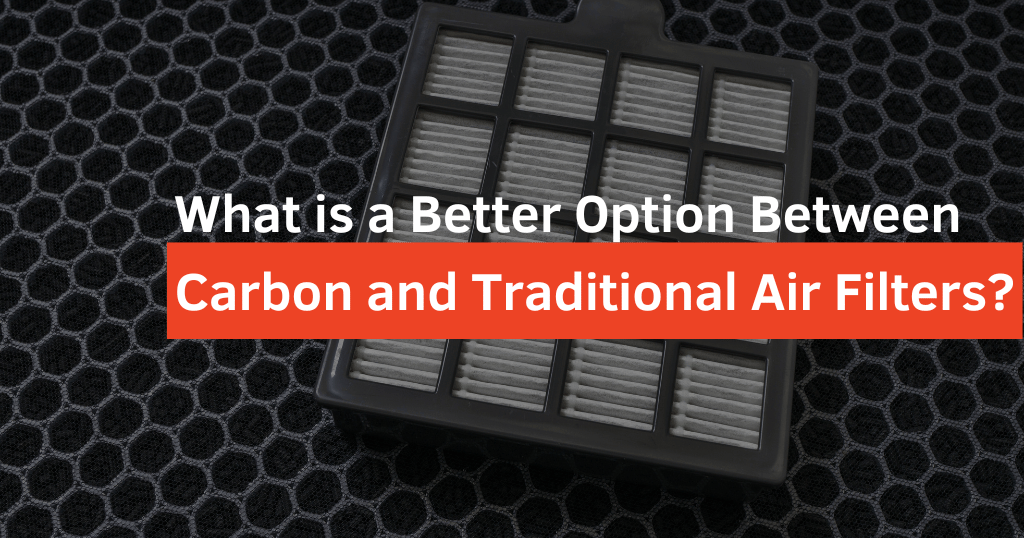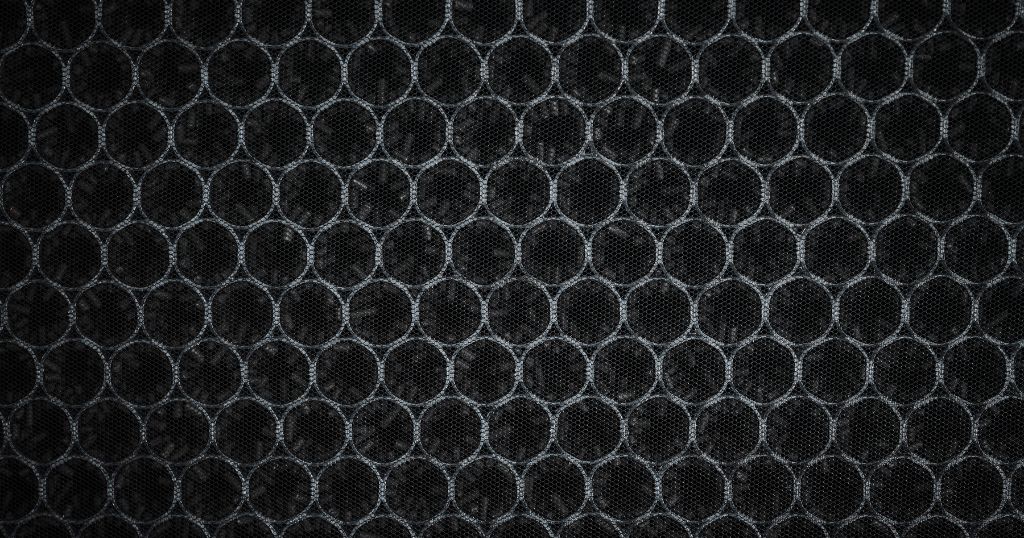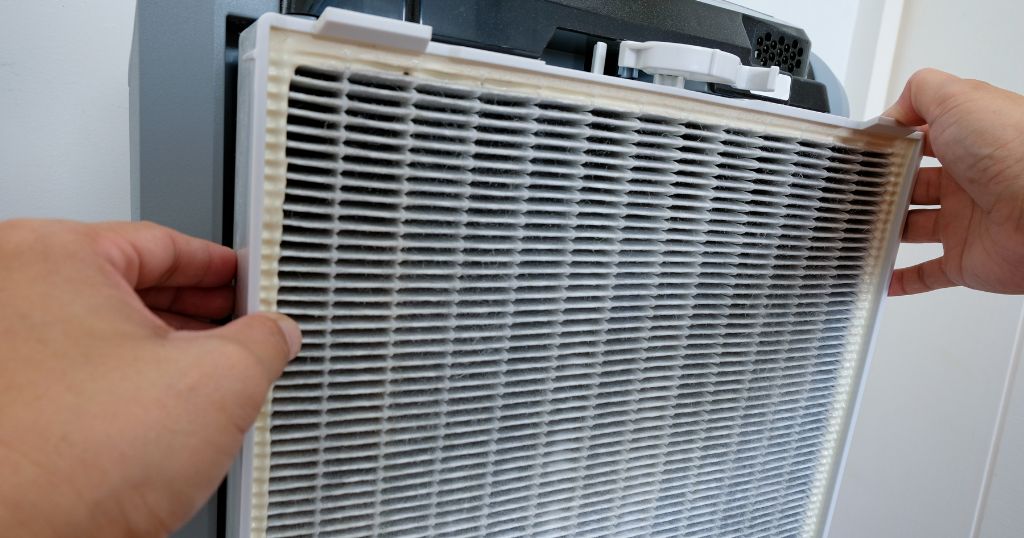All filters are made in the USA – Order Today

Have you ever walked into your house and instantly smelled last night’s dinner, despite having aired it out? Or perhaps dust bunnies become unwelcome roommates, reminding you how much they adore your spotless floors. We all want fresh, clean air in our homes. And for that, we must have the appropriate air filter in our homes. However, selecting the right air filter can be challenging.
Today, we’re simplifying things by comparing two popular options: carbon and regular air filters. Think of it like picking the right superhero for your air quality needs! Imagine carbon air filters as the odor-absorbing ninjas of the air world. They’re great at trapping smells, smoke, and even some gasses, like the lingering scent of your delicious (but maybe slightly smoky) stir-fry.
Regular air filters, on the other hand, are more like the dust-busting warriors. They capture pollen, pet dander, and those pesky dust bunnies that multiply faster than you can vacuum. So, which one is right for you? Don’t know? Don’t worry. Let’s take a deep dive into this blog to know the strengths and weaknesses of these air filters and who they’re best suited for.

Remember those little black packets you find tucked away in fish tanks or refrigerators, keeping things smelling fresh? Carbon air filters are their supersized cousins, working tirelessly to eliminate unwanted odors, gasses, and chemicals from your indoor air. Think of them as the charcoal briquettes of the air filtration world, but way more effective and (hopefully) less likely to spark a fire!
But how do these odor-absorbing champions work their magic? It all comes down to a process called adsorption. Imagine millions of tiny pores scattered across the surface of the carbon filter, like microscopic sponges just waiting to soak up unwanted molecules. As air passes through the filter, these gas molecules get attracted to the pores and cling on, leaving your air cleaner and fresher.
It’s important to note that carbon air filters are not replacements for traditional air filters. They won’t trap dust, pollen, or other allergens, so it’s best to use them in conjunction with a regular filter for complete air purification.

Traditional air filters are the workhorses of air purification, capturing dust, pollen, and other airborne pollutants to keep your indoor air clean and safe. They are available in a variety of types, each with its own set of advantages and features.
These filters have a large surface area due to their pleated design, which looks like a folded accordion. This enables them to effectively capture a wide variety of particles, including dust, pollen, and pet dander. Consider them efficient soldiers who provide broad protection against common household air contaminants.
HEPA stands for High-Efficiency Particulate Air, and these filters provide the highest level of filtration possible. They can capture 99.97% of particles as small as 0.3 microns, making them ideal for allergy and asthma sufferers. Consider them elite specialists, trained to combat even the smallest airborne enemies.
Rather than using physical barriers, these filters attract and trap dust and allergens using static electricity. Consider them as innovative guardians who use an electrical field to neutralize airborne particles. While effective, they require regular cleaning and may emit ozone in some cases, so do your research before deciding on this option.
No single filter type is perfect. Each has its own strengths and weaknesses, so it’s essential to understand your specific needs.
By understanding the different types of traditional air filters and their capabilities, you can make an informed decision and choose the right air filter for your needs.

So far, we’ve met the carbon air filters, which absorb odors, and the traditional air filters, which remove dust. But who wins the battle for cleaner air? Tighten your seatbelts as we are about to compare them:
There’s no clear winner, as the perfect air filter for your home depends on your specific needs and priorities. Consider these factors:
Remember, you can even combine both types of filters for comprehensive air purification! Ultimately, the best filter is the one that effectively addresses your air quality concerns and fits your budget and lifestyle.

Instead of framing it as a battle between carbon and traditional air filters, let’s focus on finding the best air filter for your specific needs. Remember, both types have distinct advantages, and the “better” option is entirely dependent on your specific circumstances. Here’s a breakdown to help you choose:
By understanding your air quality concerns and considering these factors, you can confidently choose the air filter that is perfect for your home and provide your family and furry friends with clean and healthy air.
Choosing the right air filter for your home can make a significant difference in your indoor air quality. Carbon air filters are excellent at removing odors and harmful gasses, while traditional air filters are ideal for capturing dust, pollen, and other allergens. Ultimately, the right filter for you will depend on your specific needs and preferences.
Consider factors like the size of your home, the presence of pets, and any health concerns you may have before selecting an air filter. With the right filter in place, you can enjoy fresh, clean air in your home and breathe easier, knowing that you are taking steps to protect your health.
If you are concerned about the indoor air quality in your home and are looking for the right filter for you, you can connect with the experts at Custom Filters Direct. Our experts will help you find the appropriate air filter for your home that will provide you and your family with clean and healthy air. Call us at 1-877-958-5612 today!
Both carbon and “normal” (traditional) air filters tackle air impurities, but they excel in different areas. Carbon filters are odor ninjas, using activated carbon to trap and absorb gasses, smoke, and unpleasant smells like cooking fumes. Think of them as sponges soaking up unwanted scents. They’re not great at dust though.
Traditional filters act like shields, stopping dust, pollen, and pet dander in their tracks with physical barriers. They come in various types, with HEPA filters offering the best defense against even the tiniest particles. So, choose a carbon filter for odors, a traditional filter for dust, or combine both for complete protection!
There’s no single “better” filter as it depends on your needs! HEPA filters reign supreme for dust, pollen, and allergies, capturing 99.97% of particles as small as 0.3 microns. Think of them as allergy assassins. However, they don’t tackle odors. Carbon filters excel at odor-absorbing, eliminating smoke, cooking smells, and VOCs.
But they are not so great at dust. If you primarily battle odors, a carbon filter is your friend. For dust and allergies, a HEPA filter shines. If you face both issues, combine them or consider a HEPA filter with activated carbon for all-around protection! Remember, consider your air quality concerns and budget when choosing the perfect filter for you.
Carbon filters excel at odors, but have downsides:
While these cons exist, weigh them against your needs. If odor control is key, a carbon filter might still be your champion!
For moderate concerns, combine a carbon filter for odors (cooking, pets) with a pleated filter for general dust – an affordable solution. However, for ultimate protection, upgrade to a HEPA filter with activated carbon, capturing 99.97% of dust while absorbing odors, ideal for allergies or strong smells. Remember, carbon filters need frequent replacements (2-3 months), while HEPA filters last longer (6-12 months) but might require cleaning.
Have any questions? We’re here and ready to help!
© 2022 Custom Filters Direct. All rights reserved.